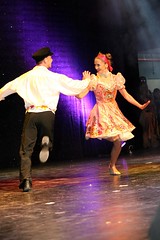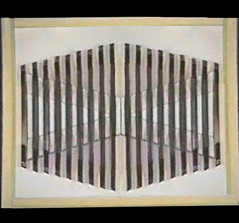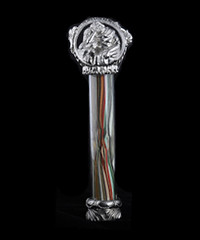Learning a language can be a long daunting task. It takes ordinarily a baby over 2 years before they start to really grasp a langauge. So studying a new one can be quite a challenge.
This is one language though that is Universal. The language of love and dating. Here is a list of ways to say I love you in many languages.
Yiddish
Afrikaans - Ek het jou lief
I Love You in separate Languages
Afrikaans - Ek het jou liefe
Apache - Shi ingolth-a
Albanian - Te dua
Alentejano (Portugal) - Gosto De Ti, Porra!
Alsacien - Ich hoan dich gear
Amharic - Afekrishalehou
Arabic - Ana Behibak (to a male)
Arabic - Ana Behibek (to a female)
Arabic (Formal Arabic) - Ooheboki (to a female)
Arabic (Formal Arabic) - Ooheboka (to a male)
Arabic - Ib'n hebbak
Arabic - Ana Ba-heb-bak
Arabic - nhebuk
Armenian - Yes kez si'rumem
Armenian - Sirem zk 'ez
Assamese - Moi tomak bhal pau
Aztec - Nimitzlaco'tla
Bari ( A Sudanese Language) - Nan nyanyar do (I love you)
Bari ( A Sudanese Language) - Nan nyanyar do parik (I love you very much)
Batak - Holong rohangku di ho
Bavarian - I mog di narrisch gern
Bengali - Ami tomAy bhAlobAshi
Bengali - Ami tomake bhalo basi
Bicol - Namumutan ta ka
Bolivian Quechua - Qanta munani
Bulgarian - Obicham te
Burmese - Chit pa de
Cambodian - Bon sro lanh oon
Cambodian - Kh_nhaum soro_lahn nhee_ah
Cambodian - Soro lahn nhee ah
Cantonese - Kgoh oi nei
Cantonese - Moi oiy neya
Cantonese - Ngo oi ney a
Cebuano - Gihigugma ko ikaw
Catalan - T'estim (mallorcan)
Catalan - T'estim molt (I love you a lot)
Catalan - T'estime (valencian)
Catalan - T'estimo (catalonian)
Cherokee - Kykeyu
Cherokee - Gv-ge-yu-hi (formal)
Cherokee - Gv-ge-yu (conversational)
Cheyenne - Nemehot tse
Chickasaw Chiholloli (first "i" nasalized)
Chinese - Wo ai ni
Chinese - Wo ie ni
Corsican - Ti tengu cara (to female)
Corsican - Ti tengu caru (to male)
Creol - Mi aime jou
Croatian - Volim te
Czech - Miluji te
Czech - Miluju te (colloquial form)
Danish - Jeg elsker dig
Dutch - Ik hou van je
Dutch - Ik hou van jou
Egyptian - Anna bahebek
English - I love you
Esperanto - Mi amas vin
Estonian - Mina armastan sind
Estonian - Ma armastan sind
Ethiopian - Afgreki'
Farsi - Asheghetam
Farsi - Tora dust midaram
Farsi (Persian) - Doostat dAram
Filipino - Mahal kita
Filipino - Mahal ka ta
Filipino - Iniibig Kita
Finnish - Min rakastan sinua
Flemish - Ik zie oe geerne
French - Je t'aime
French - Je t'adore
Friesian - Ik hou fan dei
Gaelic - Mo ghradh thu
Gaelic - Ta gra agam ort
German - Ich liebe dich
Georgian - Me shen mikvarkhar
Greek - S'agapo
Greek - Ego philo su (ego is only needed for emphasis)
Gujrati - Hoon tane pyar karoochhoon
Hausa - Ina sonki
Hawaiian Aloha I'a Au Oe
Hawaiian - Aloha I'a Au Oe
Hawaiian - Aloha wau ia oi
Hebrew - Ani ohev atach
Hebrew - Ani ohev otach (male to female)
Hebrew - Ani ohev otcha (male to male)
Hebrew - Ani ohevet otach (female to female)
Hebrew - Ani ohevet otcha (female to male)
Hindi - Mae tumko pyar kia
Hindi - My tumko pyar karta hu
Hindi - Main tumse pyar karta hoon
Hindi - Ham Tomche Payer Kortahe
Hindi - Mai tumse peyar karta hnu
Hindi (Kannada) - Naanu ninnannu premisuththene
Hindu - My tumko pyar karta hu
Hokkien - Wa ai lu
Hopi - Nu' umi unangwa'ta
Hungarian - Szeretlek te'ged
Icelandic - Eg elska pig
India (Malayalam) - njan ninne snehiykkunnu
Indonesian - Saja tjinta padamu
Indonesian - Saja kasih saudari
Indonesian - Saya Cinta Kamu
Indonesian - Saya cinta padamu
Indonesian - Aku cinta padamu
Innuktitut - Nagligivaget
Irish - Taim i'ngra leat
Inuit - Negligevapse
Italian - Ti amo (if it's a relationship/lover/spouse)
Japanese - Ai shite imasu
Japanese - Aishiteru
Japanese - Kimi o ai shiteru
Japanese - Watakushi-wa anata-wo ai shimasu
Javanese - Kulo tresno
Kiswahili - Nakupenda
Korean - Tangshin-i cho-a-yo
Korean - Sarang Heyo
Korean - Tangsinul sarang ha yo
Korean - Nanun tongshinun sarang hamnida
Kurdish - Asektem
Kurdish - Ez te hezdikhem
Kyrgyz - Men seni suyom
Lao - Khoi huk chau
Latin - Ego Te amo (ego, for emphasis)
Latin - Te amo
Latin - Vos amo
Latvian - Es tevi Mlu (s teh-vih me-lu)
Lebanese - Bahibak
Lingala - Nalingi yo
Lithuanian - Tave myliu (ta-ve mee-lyu)
Luo - Aheri
Madrid lingo - Me molas, tronca
Malay - Saya cintamu
Malay - Saya sayangmu
Malay (Indonesian) - Aku sayang enkow
Malay (Indonesian) - Sayah Chantikan Awah
Mandarin - Wo ai ni
Mohawk - Konoronhkwa
Mohawk - Kanbhik
Moroccan - Ana moajaba bik
Navaho - Ayor anosh'ni
Ndebele - Niyakutanda
Nepali - Ma timilai maya garchu
Nepali - Ma timilai man parauchu
Nigeria - Ina sonki (Hausa)
Norwegian - Eg elskar deg (Nynorsk)
Norwegian - Jeg elsker deg (Bokmaal) (pronounced: yai elske dai)
Ojibwe - Gi zah gin
Osetian - Aez dae warzyn
Pakistani - Muje se mu habbat hai
Persian - Tora dost daram
Persian - Aseketem
Persian - Doo-set daaram
Pig Latin - Ie ovele ouye or Iay ovlay ouyay
Polish - Kocham Cie
Polish - Ja cie kocham
Polish - Kocham Ciebie
Polish - Ja Ciebie Kocham
Portuguese - Eu te amo
Pushto - Za tha sara meena kawam
Romanian - Te iubesc
Russian - Ya vas lyublyu
Russian (Malincaya) - Ya Tibieh Lublue
Russian - Y'a liou-bliou tibya
Russian - Ya vac loobyoo
Russian - Ya tebya loobyoo
Russian - Ya l'ubl'u t'ebya
Russian - Ju ljublju tebja!
Russian - Ljublju tebja
Russian - Ya lyublyu tebya
Russian - Ya polubeel s'tebya
Russian - Ya tebya ljublju
Samoan - Ou te alofa outou
Serbian - Lubim te
Serbocroatian - Volim te
Shona - Ndinokuda
Sinhalese - Mama oyata adarei
Sioux (Lakota) - Techi 'hila
Sioux (Lakota) - Techihhila
Slovak - lubim ta
Slovene - Ljubim te
Somali - Wankudja'alahai
Spanish - Te amo (I love you)
Srilankan - Mama Oyata Arderyi
Sudanese (Bari) - Nan nyanyar do ( I love you)
Sudanese (Bari) - Nan nyanyar do parik ( I love you very much )
Swahili - Mimi nakupenda
Swahili - Ninapenda wewe
Swahili - Naku penda (followed by the person's name)
Swedish - Jag alskar dig
Swedish - Iaj Alskar Dej
Swiss-German - Ch'ha di ga"rn
Syrian/Lebanes - Bhebbek
Tahitian - Ua Here Vau la Oe
Tajik - Mantodro esme deram
Tamil - Naan unni kathilikaran
Tamil - Ni yaanai kaadli karen
Taiwanese - Ngua ai di or Wa ga ei li
Tcheque - Miluji te
Telugu - Neenu ninnu pra'mistu'nnanu
Telugu (India) - Nenu Ninnu Premistunnanu
Thai - Ch'an Rak Khun
Thai - Phom Rak Khun
Thai - Pom rak khun
Thai - Charn Ruck Ter
Tibetan - Khyod-la cags-so
Tunisian - Ha eh bak
Turkish - Seni Seviyurum
Ukrainian - Ja Tebe lublu
Urdu - Mujge tumae mahabbat hai
Uzbek - Man sani sevaman
Vietnamese - Toi yeu em
Vietnamese - Anh ye u em (male to female)
Vietnamese - Em ye u anh" (female to male)
Vlaams - Ik hue van ye
Welsh - Rwy'n dy garu di
Welsh - Yr wyf i yn dy garu di (Chwi)
Yiddish - Ich libe dich
Yiddish - Ikh hob dikh lib
Zazi - Ezhele hezdege
Zulu - Ngiyakuthanda
Zuni - Tom ho' ichema
Say I love you to a extra man and make their day.
I Love You in separate Languages
bloom energy electrical engineers - linkedin DC America PAGAR808MBR-S Pergola Style If You Give The Mouse a Cookie

![The Yiddish Policemen's Union: A Novel (P.S.) [Paperback]]( http://ecx.images-amazon.com/images/I/513mrWlOzcL._BO2,204,203,200_PIsitb-sticker-arrow-click,TopRight,35,-76_AA300_SH20_OU01_.jpg)








